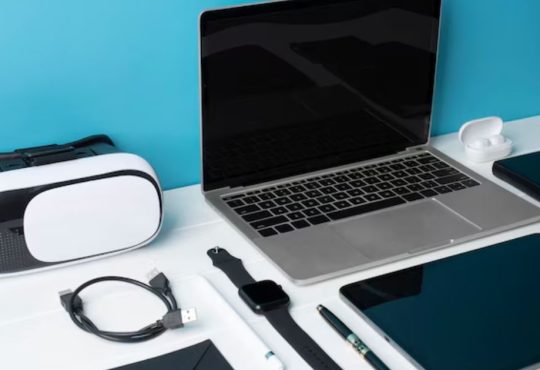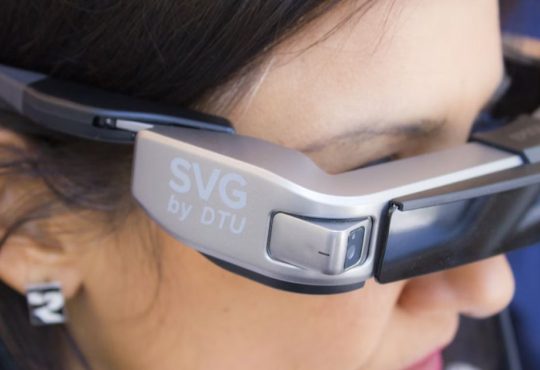Gone are the days when a travel adapter was just a clunky plug converter tossed into a carry-on, vaguely hoping it would work in your Airbnb in Madrid. Today’s travel adapters have evolved into multi-functional power hubs—sleek, innovative, and essential for the tech-savvy traveler. They don’t just bridge plug shapes; they bridge worlds, charging everything from phones to laptops to electric razors with safety and speed.
Whether you’re jetting off for work, backpacking through Southeast Asia, or plotting a multi-stop honeymoon across Europe, one thing’s clear: staying connected is non-negotiable. And that means finding a travel adapter that works with you, not against you.
So, what separates a good adapter from a must-have travel essential? Let’s dive deep into what modern travelers need—no sparks, no meltdowns, just reliable power in your pocket.
Universal Compatibility Isn’t Optional Anymore
In today’s hyper-connected world, where international travel is more accessible than ever and digital devices are essential travel companions, your adapter needs to be a global citizen. Whether you’re planning a backpacking trip across Southeast Asia, attending conferences in Europe, or exploring hidden gems in South America, a truly universal adapter is no longer a convenience; it’s a necessity.
The most versatile adapters on the market now support plug types across more than 150 countries, covering both popular and lesser-known destinations. At a minimum, your adapter should help the Big Four plug types:
- Type A (flat prongs): Commonly used in the U.S., Canada, Japan, and parts of Central America.
- Type G (three rectangular prongs) — the standard in the U.K., Ireland, Hong Kong, and many former British colonies.
But for the true globetrotter, that’s just the beginning. High-end universal adapters go the extra mile by including support for more niche plug types like:
- Type M – Found in South Africa and parts of India. Features three large round pins in a triangular layout.
- Type N (specific to Brazil)
- Types D and E/F, found in India, Nepal, and much of continental Europe
Why does this matter? Because showing up in a country like Namibia or Sri Lanka only to find out your adapter won’t fit the socket can turn into a tech nightmare, especially when you’re running low on battery, data, and patience. A fully compatible adapter saves time, money, and the stress of hunting down region-specific plugs in local markets.
But plug shape isn’t the only thing that matters anymore.
Today’s travelers often carry multiple devices that require simultaneous charging, including smartphones, tablets, e-readers, power banks, Bluetooth earbuds, smartwatches, and possibly even a drone or camera battery. That’s why built-in USB ports are now a must. Look for:
- At least two USB-A ports for your legacy devices
- One or two USB-C ports, which support faster charging for modern phones and laptops
USB-C is quickly becoming the universal standard. It’s the go-to port for fast, efficient charging and is already used in the latest MacBooks, iPads, Samsung Galaxy models, Pixel phones, Nintendo Switch consoles, and many other devices. A travel adapter without USB-C in 2025 is like a passport with no visa stamps—it’s technically valid but wildly underprepared for real-world use.
Even better, many premium models now feature slide-out plug heads or rotating modules that adjust to different socket types at the push of a button. These clever designs eliminate the need to carry a bag of plug attachments, making the adapter more compact and easier to pack. No more fiddling with loose parts or watching helplessly as a key attachment rolls under a hotel bed moments before a Zoom call.
In short? A modern travel adapter should:
- Plug in almost anywhere without needing extra attachments.
- Charge multiple devices simultaneously — including power-hungry gadgets with USB-C, such as laptops, tablets, and modern smartphones — without needing various chargers.
- Adapt on the fly with intuitive, modular designs.
So, before you settle for a cheap one-size-fits-none brick, consider what you’re buying: peace of mind. Because when you’ve just landed in a new country and your phone’s at 3%, you’ll want an adapter that’s not just compatible—it’s confidently ready to power your journey.
USB‑C and Fast‑Charging Ports Are a Game-Changer
Travelers today juggle more gadgets than ever before—smartphones, tablets, smartwatches, laptops, cameras, earbuds, and power banks, each with its charging appetite. A single two-prong plug just doesn’t cut it anymore. That’s where multi-port travel adapters step in as essential tech companions, offering the ability to charge multiple devices simultaneously without hogging outlet space.
The most efficient models now feature a brilliant combo of two to four USB-A ports for legacy devices, alongside at least one USB-C Power Delivery (PD) port capable of high-speed output, often up to 65W. That means lightning-fast charging for laptops or boosting a phone battery from 0% to 80% in under 30 minutes. With GaN (gallium nitride) technology onboard, these adapters remain cool, compact, and efficient, even when powering multiple devices simultaneously. The result? A pocket-sized powerhouse that replaces the clutter of various chargers with a single, sleek solution—perfect for airport lounges, hotel desks, or wherever a charging frenzy strikes.
Surge Protection Matters—A Lot
Unstable power grids are a reality in many parts of the world, particularly in rural regions or areas with underdeveloped infrastructure. One moment, everything is charging smoothly, and the next, a voltage spike could leave it permanently fried. In places where electrical fluctuations are common, surge protection isn’t just a helpful feature—it’s essential.
Modern travel adapters worth their salt now include built-in surge protectors that absorb sudden jolts of electricity before they reach your devices. Advanced models take it a step further, offering overload detection that automatically shuts off the current during power surges, along with thermal fuses that kick in to prevent overheating or short circuits. These safety features are particularly vital in countries where inconsistent power supplies can significantly impact the travel experience, like parts of Southeast Asia, India, or older cities across Europe. One surge is all it takes to lose your phone, laptop, and backup charger in one sizzling second. Reliable surge protection keeps your gear safe, your plans uninterrupted, and your sanity intact.
Adaptations. Converters: Know the Difference
Adapters = shape shifters. Converters = voltage changers.
This is one of the most common (and costly) travel mistakes.
Plug adapters modify the shape of the plug, allowing your device to connect to foreign sockets physically. But they don’t change the voltage. Most countries run on 220-240V, while others (like the U.S.) use 110V. If you plug a 110V heater into a 240V socket without a converter, you’ll be met with a puff of smoke and the smell of melted dreams. You’ll have good news? Most modern electronics (phones, tablets, laptops) are built to handle a range of 100–240V. Check the label—if it says “INPUT: 100–240V,” you’re safe with a plug adapter alone. If not, and you’re packing high-powered gear like hair dryers or curling irons, you’ll either need:
- A voltage converter, which is usually bulky and heavy
- Or better yet, dual-voltage appliances designed for travel
Pro tip: Many brands now offer travel-specific versions of grooming tools that are compatible with built-in voltage. You’re double-checking the fine print before plugging in.
Modular or Interchangeable Designs Cut Clutter
Seasoned travelers know that space is a valuable commodity. The best travel adapters respect that by offering modular, swappable plug designs that let you bring only what you need. You’re not going to all seven continents in one trip, so why carry seven-prong types?
Look for models that:
- Slide or snap in different plug heads
- Include built-in cable management or stackable sections
- Features to keep everything organized
Some even come with built-in power banks, letting you charge even when no outlet is in sight. Others double as desk hubs or wall-mounted charging stations back home. Efficiency meets adaptability—a minimalist traveler’s dream.
The Tech Swiss Army Knife of Adapters
The newest generation of travel adapters isn’t just plug converters—they’re full-on survival kits for global adventures. The impact power tools now come with some pretty clever features, including:
- SIM card ejector tools are built into the body
- Mini phone stands for in-flight streaming
- LED night light, they ‘reark hotel rooms (no you’lltubbing your toe at 2 a.m.)
- Replaceable fuses so a single surge doesn’t kill the whole adapter
- Wi-Fi hotspot capabilities for backup internet access
- Built-in storage for extra USB-C or Lightning cables
These additions may sound gimmicky, but they’re the kind of things you’ll thank yourself for later, such as when you realize you’ve left your SIM ejector pin at home, or when the hotel Wi-Fi cuts out and you need to upload work files ASAP. It’s a gain—no matter how far off the grid your journey takes you.
More Than a Plug—It’s Your Power Passpor
A travel adapter is no longer just a plug-shaped afterthought—it’s a key player in your travel toolkit, one that can seriously impact the success (or chaos) of your trip. It’s essentially a digital passport, ensuring you stay powered and productive, no matter where your itinerary leads. The correct adapter does more than just fit into a socket; it powers multiple devices simultaneously, offers fast charging, protects your gear from voltage spikes, fits easily into your carry-on, and adjusts seamlessly to any device’s power requirements.
Leave the bulky, one-function plug converter of the past behind and step into the future with a smart, versatile travel adapter built for modern globetrotters. In 2025, it’s not just an accessory—it’s a lifeline that keeps everything powered, connected, and running smoothly wherever the journey takes you. A digital lifeline that keeps everything powered, connected, and running smoothly wherever the journey takes you. The correct travel adapter keeps everything running smoothly, from your devices to your itinerary. Choose wisely, and you won’t juwon’tay connected—you’ll syou ‘llwered, protected, and ready for whatever your next destination throws your way. You’ll lead, wherever the road, rails, or runway takes you.





